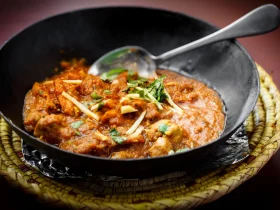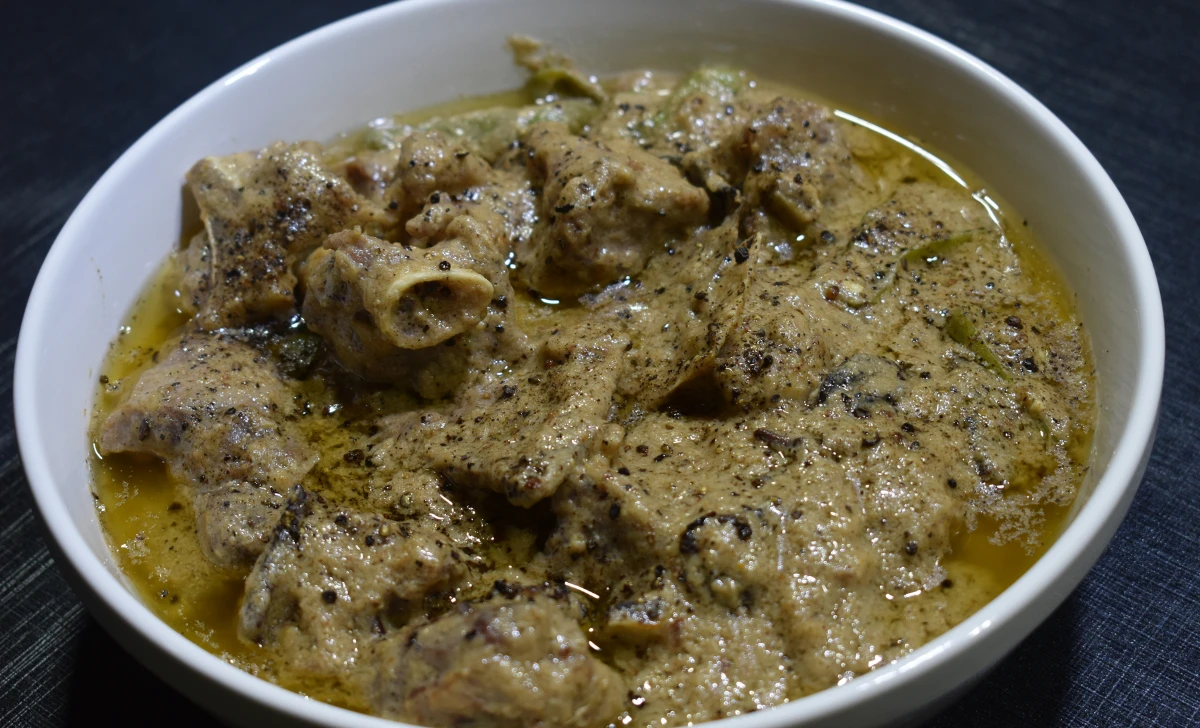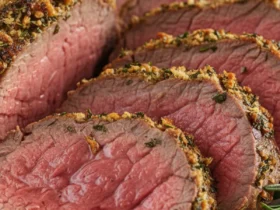Cooking is not just about following a recipe; it’s an art that allows you to explore flavors and create memorable experiences. If you’re a fan of rich and savory Pakistani cuisine, then you’re in for a treat! In this article, we’re diving into the world of culinary delights with a focus on the beloved White Mutton Karahi recipe. Get ready to embark on a gastronomic journey that will leave your taste buds dancing with joy!
[ez-toc]
History
The karahi, a traditional South Asian cooking vessel, has been used for centuries to create mouthwatering dishes that capture the essence of the region’s rich culinary heritage. With its distinctive shape and versatile design, the karahi has played a significant role in shaping the way food is prepared and enjoyed.
The roots of the karahi can be traced back to the Indian subcontinent, where it emerged as an essential piece of cookware in both homes and restaurants. The word “karahi” itself is derived from the Urdu and Persian languages, referring to a deep, circular, and flat-bottomed cooking pot with high, sloping sides. This unique design allows for even heat distribution and effective frying, making it perfect for creating dishes that are bursting with flavors.
In its early days, the karahi was primarily used for cooking meat-based dishes, especially those that required frying and sautéing. The rounded bottom allowed for the meat to be cooked evenly, while the high sides prevented oil or spices from splattering out. This made the karahi a popular choice for preparing dishes like biryanis, curries, and of course, karahis.
The evolution of the karahi as a cooking vessel is a testament to the ingenuity of the region’s culinary experts. Over time, the traditional karahi has been adapted to suit various cooking styles and preferences. It has been embraced by different cultures and cuisines, each adding their unique twist to the classic recipes.
The White Mutton Karahi recipe itself is a manifestation of this evolution. While the basic concept of cooking meat in a karahi remains the same, the use of yogurt and cream to create a creamy, white sauce is a modern innovation. This blending of tradition and innovation exemplifies how culinary practices continue to evolve while honoring their roots.
As the years have passed, the karahi has become more than just a cooking utensil. It has become a symbol of togetherness, celebration, and the joy of sharing a delicious meal with loved ones. From festive gatherings to casual dinners, the karahi has a way of bringing people closer, igniting conversations, and creating memories that linger long after the meal is finished.
Time
| Step | Time |
|---|---|
| Marinating the Mutton | 1 hour |
| Cooking the Base Karahi | 15 minutes |
| Adding the Mutton and Spices | 10 minutes |
| Simmering to Infuse Flavors | 20 minutes |
| Total Time | 1 hour 45 minutes |
Cooking is a delightful journey, and making White Mutton Karahi is no exception. The steps above outline the estimated time required for each phase, ensuring that you embark on a satisfying culinary adventure without rushing through the process. Remember, good food takes time, and the results are well worth the patience invested.
Ingredients
| Ingredients | Quantity |
|---|---|
| Mutton (bone-in pieces) | 300 grams |
| Yogurt | 1/4 cup |
| Ginger (paste) | 1 tablespoon |
| Garlic (paste) | 1 tablespoon |
| Salt | 1/2 teaspoon |
| Oil | 2 tablespoons |
| Onions (finely sliced) | 2 medium |
| Tomatoes (chopped) | 1 medium |
| Green Chilies | 2-3 (adjust to taste) |
| Coriander Powder | 1 teaspoon |
| Cumin Powder | 1/2 teaspoon |
| Garam Masala Powder | 1/2 teaspoon |
| Cream | 1/4 cup |
| Fresh Coriander Leaves (chopped) | for garnishing |
| Ginger (julienne) | for garnishing |
Preparing a sumptuous White Mutton Karahi for two is a delightful experience. These ingredients will ensure that you create a memorable culinary masterpiece that’s perfect for sharing with a loved one.
Directions
1. Marinating the Mutton
Time: 1 hour
- Wash the mutton pieces thoroughly and pat them dry with a paper towel.
- In a bowl, combine yogurt, ginger paste, garlic paste, and half a teaspoon of salt. Mix well to create a marinade.
- Add the mutton to the marinade, ensuring that each piece is coated evenly.
- Cover the bowl with plastic wrap and let the mutton marinate in the refrigerator for at least an hour. This will allow the flavors to infuse and tenderize the meat.
2. Cooking the Base Karahi
Time: 15 minutes
- Heat two tablespoons of oil in a karahi over medium heat.
- Add finely sliced onions and sauté them until they turn golden brown. This will take about 5-7 minutes.
- Incorporate ginger and garlic paste, stirring them into the onions until the raw aroma dissipates.
- Toss in the chopped tomatoes and let them cook until they soften and meld with the other ingredients.
3. Adding the Mutton and Spices
Time: 10 minutes
- Gently add the marinated mutton to the karahi, allowing it to sear and lock in its flavors.
- Sprinkle coriander powder, cumin powder, and garam masala over the mutton. Mix everything well to ensure the spices are distributed evenly.
- Slit the green chilies and add them to the karahi, adjusting the quantity based on your spice preference.
4. Simmering to Infuse Flavors
Time: 20 minutes
- Lower the heat to a simmer and let the mutton cook for about 15 minutes. This will allow the flavors to meld and the mutton to become tender.
- Pour in the cream and gently stir it into the karahi. This will create a luscious, creamy texture that complements the spices.
- Allow the karahi to simmer for another 5 minutes, ensuring that the flavors are fully integrated and the mutton is cooked to perfection.
5. Garnishing and Serving
- Once the White Mutton Karahi is cooked to your satisfaction, turn off the heat.
- Garnish the karahi with freshly chopped coriander leaves and julienne ginger. These additions will not only enhance the presentation but also add a burst of fresh flavors.
- Serve the karahi hot, along with naan, roti, or steamed rice. Let your culinary creativity shine as you savor each delicious bite.
Cooking White Mutton Karahi is an art that combines tradition and innovation, resulting in a dish that’s rich in flavors and history. So, roll up your sleeves and enjoy the rewarding experience of crafting a culinary masterpiece that’s sure to impress!
Equipment Required
Nutrition Information
| Nutrient | Per Serving (approx. 1 cup) |
|---|---|
| Serving Size | 1 cup |
| Calories | 350 |
| Total Fat | 22g |
| Saturated Fat | 8g |
| Cholesterol | 95mg |
| Sodium | 420mg |
| Total Carbohydrates | 9g |
| Dietary Fiber | 2g |
| Sugars | 4g |
| Protein | 28g |
Please note that the nutrition information provided is an approximation and can vary based on factors such as portion sizes, specific ingredients used, and cooking methods. It’s always a good practice to consult a registered dietitian or use a nutrition calculator for precise nutritional information based on your ingredients and serving sizes. Enjoy your White Mutton Karahi while keeping a balanced approach to your dietary needs.
Tips
- For the most tender and flavorful mutton, marinate the meat for an extended period, ideally overnight. This allows the yogurt and spices to penetrate deeply, resulting in mutton that’s succulent and full of flavor.
- If you’re short on time, you can still marinate the mutton for at least an hour before cooking. Even this shorter marination time will make a noticeable difference in the final dish.
- Adjust the quantity of green chilies to suit your spice preference. If you’re looking for a milder taste, reduce the number of chilies, and if you love heat, feel free to increase the quantity.
- Taste and adjust the salt and spices as you cook. Remember, cooking is an exploration of flavors, and your taste buds are the guide.
- While the recipe calls for mutton, you can easily substitute it with chicken for a lighter option. Follow the same marination and cooking process, adjusting the cooking time as needed.
- For a vegetarian twist, replace the mutton with paneer or tofu. The creamy base and spices will create a delectable vegetarian version of the karahi.
- Use the freshest ingredients possible for the best results. Fresh mutton, aromatic spices, and vibrant vegetables will elevate your White Mutton Karahi to new heights.
- Opt for organic or locally sourced ingredients when available. These choices not only enhance the flavor but also contribute to sustainable cooking.
Pros & Cons
| Pros | Cons |
|---|---|
| ✅ Bursting with Flavor | ❌ High in Saturated Fat |
| ✅ Rich and Creamy Base | ❌ Requires Marination Time |
| ✅ Versatile Protein Options | ❌ High Calorie Content |
| ✅ Celebratory Dish | ❌ Potential for Overcooking Mutton |
| ✅ Great for Sharing | ❌ May Be Spicy for Some Palates |
Conclusion
As we wrap up our culinary journey into the world of White Mutton Karahi, we hope you’re as excited as we are about this delectable dish. This recipe is more than just a collection of ingredients; it’s an exploration of flavors, a celebration of tradition, and an invitation to create cherished memories around the dining table.
The rich and creamy base, infused with aromatic spices and tender mutton, is a symphony of taste that’s bound to leave a lasting impression on your palate. Whether you’re sharing it with friends, family, or savoring it as a special treat for yourself, White Mutton Karahi is a culinary adventure worth embarking upon.
As you dive into the process of marinating, cooking, and garnishing, remember that cooking is a creative art that allows you to add your personal touch. Adjust the spice levels, experiment with protein variations, and let your culinary intuition guide you.
So, don your apron, gather the freshest ingredients, and immerse yourself in the joy of crafting a White Mutton Karahi that’s as unique as you are. The kitchen is your canvas, and this recipe is your masterpiece waiting to be brought to life.
Get ready to delight in every flavorful bite and create memories that linger long after the meal is over. Don’t wait any longer; it’s time to embrace the magic of White Mutton Karahi and experience the culinary adventure of a lifetime. Bon appétit! 🍽️🌟
Facts
- 1. A Karahi for Every Occasion! 🍽️
- Did you know that the karahi, the iconic cooking vessel for this dish, comes in various sizes? From mini karahis for individual servings to massive ones for feasts, there’s a karahi for every occasion. So whether you’re cooking for two or hosting a grand gathering, your White Mutton Karahi can fit the bill!
- 2. A Celestial Connection: The Creamy Constellation 🌌
- The creamy base of White Mutton Karahi is like a constellation of flavors. Just as stars come together to create mesmerizing patterns in the night sky, the yogurt, cream, and spices blend harmoniously to form a rich and celestial experience for your taste buds.
- 3. Time Travel on Your Plate: Ancient Flavors, Modern Twist ⏳
- While the White Mutton Karahi recipe is a modern take on a classic dish, the flavors are steeped in history. Imagine indulging in a dish that connects you to centuries-old culinary traditions, all while enjoying a contemporary twist that’s sure to impress your palate.
- 4. Heat, Heart, and Heritage: The Essence of Karahi Cooking 🔥
- The sizzling sound of mutton hitting the karahi, the wafting aroma of spices – this cooking method engages not only your senses but also your heart. Karahi cooking is an art that encapsulates the essence of Pakistani culture, evoking warmth, togetherness, and the joy of sharing a meal.
- 5. Karahi Chronicles: A Dish Named Desire 📖
- Legend has it that the karahi earned its name from the Urdu word “karhna,” which means “to do” or “to create.” Isn’t it poetic that this dish is not only created in the karahi but also reflects the act of culinary creation itself? Each time you prepare White Mutton Karahi, you’re crafting a flavorful masterpiece worthy of its storied history.
FAQ’s
Can I use chicken instead of mutton?
Yes, absolutely! You can substitute mutton with chicken to create a delicious Chicken Karahi. Just follow the same marination and cooking process, adjusting the cooking time accordingly.
What makes white karahi different from the traditional version?
The key difference lies in the base. While the traditional version has a tomato-based gravy, white karahi features a creamy base made from yogurt and cream, resulting in a rich and luxurious texture.
Can I adjust the level of spiciness?
Certainly! You can control the spiciness by varying the quantity of green chilies and red chili powder. Adjust according to your preference for a milder or spicier flavor profile.
Is marination time crucial?
Marination time enhances the flavor and tenderness of the meat. While an hour is sufficient, marinating the mutton overnight will yield the best results, allowing the flavors to penetrate deeply.
What side dishes pair well with White Mutton Karahi?
White Mutton Karahi pairs wonderfully with naan, roti, or steamed rice. You can also serve it with a simple cucumber and mint yogurt salad for a refreshing contrast.
Can I make it less creamy if I prefer?
Absolutely! If you prefer a lighter version, you can reduce the amount of cream in the recipe. This will result in a slightly less creamy but still flavorful dish.
How do I prevent overcooking the mutton?
To avoid overcooking, keep an eye on the mutton while it simmers. Cook until it’s tender and no longer pink in the center. Overcooking can result in tough meat.
Is it possible to freeze leftover White Mutton Karahi?
Yes, you can freeze the leftover karahi in an airtight container for up to three months. Reheat it on the stovetop with a splash of water, stirring occasionally.
Can I add vegetables to the recipe?
Absolutely! You can enhance the dish by adding bell peppers, onions, or even potatoes to the karahi. Just ensure they are chopped to similar sizes for even cooking.
What’s the best way to reheat leftover karahi?
The best way to reheat leftover karahi is on the stovetop over medium-low heat. Add a splash of water to prevent it from drying out, and gently stir until it’s heated through.












Leave a Review